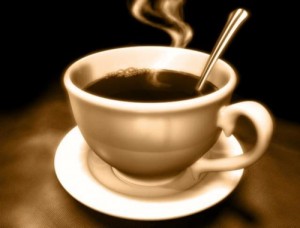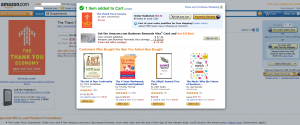 Cook a steak to 130 degrees and it will be a perfect medium rare. Mhmm, that’s the good stuff. On the side is a nice helping of mashed potatoes with a nice dose of cheese and garlic. Perhaps some mixed vegetables on the side or a few asparagus spears laid across the top of the steak. Unfortunately, that is not the meal that this post is about. This post is about the economics of hot food, or rather it is about me wondering about the economics of hot food. Let’s get to it.
Cook a steak to 130 degrees and it will be a perfect medium rare. Mhmm, that’s the good stuff. On the side is a nice helping of mashed potatoes with a nice dose of cheese and garlic. Perhaps some mixed vegetables on the side or a few asparagus spears laid across the top of the steak. Unfortunately, that is not the meal that this post is about. This post is about the economics of hot food, or rather it is about me wondering about the economics of hot food. Let’s get to it.
I read that if you put something on your tongue that is 150 degrees and leave it there for 2 seconds you will burn yourself. If the temperature is 155 degrees or more it is one second or less. So now we know that it is unwise to attempt to consume something that is at or around 150 degrees. That means I can dive right into my medium rare steak, but a well done steak will come it at 160 degrees so watch out. So a steak may or may not be fine to eat right off the grill but a fresh brewed cup of coffee typically clocks in at 200 degrees! It takes more than a second or two for that to cool down to a drinkable temp, doesn’t it. And that brings me to the point of this post. Does a company figure out what is the ideal temperature to serve food at that maximizes customer satisfaction while minimizing additional food and/or beverage they will need to serve?
Take, for example, the Red Lobster special of Endless Shrimp. While not excessively expensive themselves, the shrimp do cost more than, say, beans. Additionally, it takes prep time to prepare them (no matter how fast your people are it takes time). It is also true that a person will feel full after they stop eating because it takes the body a while to realize that it is full. Surprisingly, it may be as long as 20 minutes after you stop eating! Therefore, if Red Lobster keeps the shrimp coming as fast as they can, not only will you overeat but they will erode their profit margin (and make it back on that beer you had).
Interestingly then, it makes the most sense for everybody to have you consume the shrimp at a slower pace. One way to do this is to serve you slowly. While that is effective, you might tell your friends about how you felt ripped off at Endless Shrimp at Red Lobster due to their slow service. But if Red Lobster just serves you food that is simply too hot for you to eat you don’t really have a story (so long as it is not excessively hot). This same concept can be applied to many places. I remember first having this thought years ago in college when I ate at a Red Robin because of the “endless steak fries” but the things came out so hot that I only got one serving. I didn’t want to have to wait around for the next serving to cool off so I didn’t get one. Not only did they not spend money on the food, but the server can serve more tables because they are not dealing with refills.
On a one-off basis the concept may seem silly, but when multiplied by thousands or millions of people being served, there could be a huge cost savings here. And then of course there is the flip side. If you serve something, like a coffee at a coffee shop, and it is a cool enough temperature that the individual can consume it quickly (but not so cool as to make it cold), perhaps people would finish their drink more quickly and it would increase coffee sales. Again, on a large scale this could be big money.
I wonder if food companies take any of this into consideration when making and serving food.
What do you think?
This has been a Thought From The Cake Scraps.
 I am pretty excited today because I am in a test group of the new Amazon.com “Add to Cart” process. Instead of serving up a new page they are doing an overlay of the page you are on, a much better experience in my opinion. As a web analyst I can’t help but wonder what sort of impact this is having on their conversion metrics.
I am pretty excited today because I am in a test group of the new Amazon.com “Add to Cart” process. Instead of serving up a new page they are doing an overlay of the page you are on, a much better experience in my opinion. As a web analyst I can’t help but wonder what sort of impact this is having on their conversion metrics.